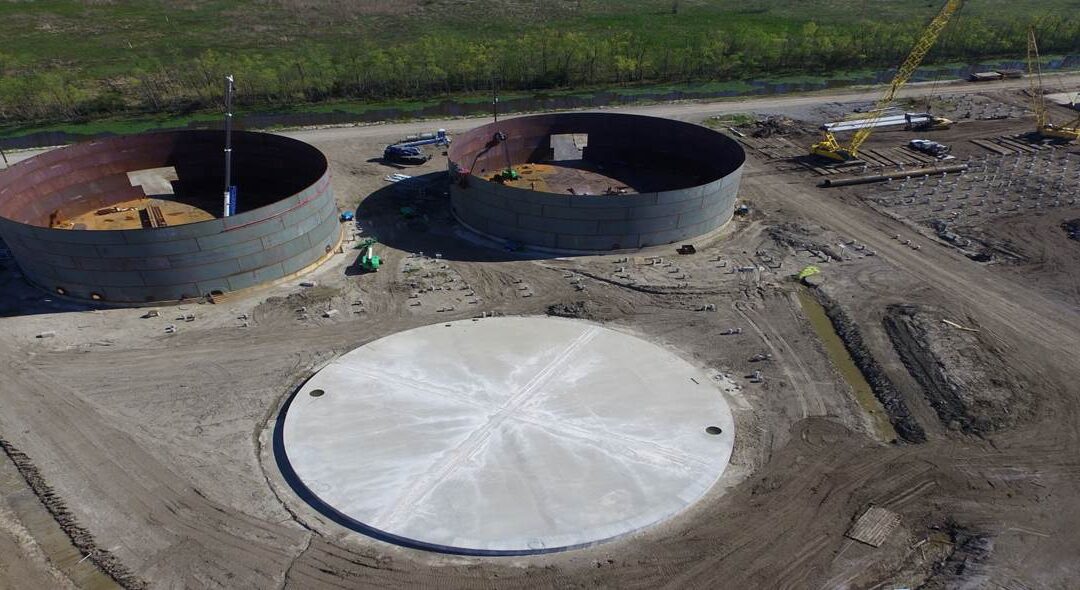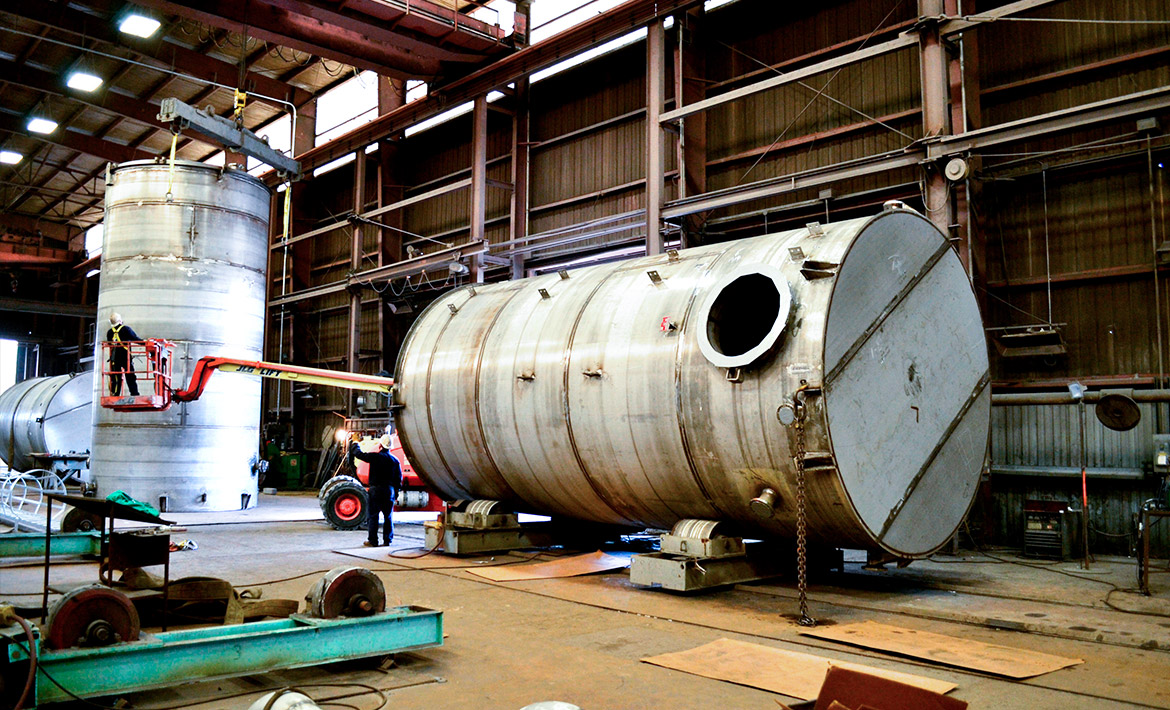How API 650 Welding Inspection Supports Long-Term Safety in Engineering
Wiki Article
A Step-by-Step Check Out the Installment Refine of Welding Evaluation Techniques
Welding inspection is a vital procedure that guarantees architectural integrity and safety and security. The installation of examination techniques entails several organized actions, each important to attaining reputable outcomes. From preparation and device choice to conducting visual and non-destructive examinations, each phase demands mindful attention. Comprehending these procedures can greatly improve quality control in welding projects. What challenges emerge in executing these methods, and just how can they be effectively attended to?Recognizing the Importance of Welding Inspection
Welding inspection is an essential component of guaranteeing structural integrity and security in building and production processes. This technique includes reviewing bonded joints for problems, ensuring that they fulfill details standards and regulations. By systematically evaluating weld quality, inspectors can recognize issues such as splits, voids, and incomplete combination, which can compromise the strength and resilience of structures.The relevance of welding inspection expands past prompt safety and security problems; it assists stop expensive failures and potential risks in the lengthy term. Efficient examination strategies foster conformity with sector criteria, consequently improving the overall integrity of bonded parts. On top of that, a robust inspection procedure adds to preserving the track record of producers and contractors, as it guarantees clients of the top quality of their jobs. Inevitably, recognizing the value of welding evaluation is essential for advertising risk-free building practices and making certain the durability of essential infrastructure and products.
Choosing the Right Tools for Examination
When picking the ideal devices for evaluation, it is essential to consider the particular needs of the welding procedure and the materials included. Various assessment approaches, such as aesthetic, ultrasonic, and radiographic screening, necessitate unique devices customized to their special needs. For visual assessments, devices like magnifying calipers and glasses are crucial for assessing weld high quality. Ultrasonic testing needs customized tools capable of sending and receiving acoustic waves to find inner flaws. Radiographic screening, on the various other hand, utilizes X-ray or gamma-ray sources together with sensitive film or digital detectors to expose variances.
In addition, individual safety tools (PPE) is vital to ensure the security of inspectors during assessments. Choosing the right tools not only enhances the precision of inspections but also adds to the total stability and safety and security of the welding job. As a result, a thorough understanding of readily available devices and their applications is essential for effective welding inspection.
Preparing for the Inspection Process
Before starting the assessment procedure, it is crucial to develop a complete plan that outlines the extent and goals of the assessment. This plan must include details standards that specify what constitutes acceptable top quality in the welding work being inspected. Determining the appropriate codes and standards is essential, as they will guide the assessment requirements and techniques.Furthermore, workers involved in the assessment must be properly educated and licensed in welding examination methods to guarantee integrity and accuracy. A list can be beneficial in arranging the different facets of the inspection, varying from tools readiness to ecological conditions that could affect the analysis.

Lastly, logistical factors to consider such as organizing, offered sources, and interaction in between employee ought to be attended to. By preparing systematically, examiners can improve the efficiency of the examination and make sure that all vital elements are properly taken into consideration before waging the inspection itself.
Conducting Visual Assessments

Conducting aesthetic assessments is a vital action in the welding examination procedure, requiring careful prep work to guarantee reliable examination. Inspectors must be acquainted with key issue indications that can signal potential problems in weld quality. By concentrating on these aspects, one can improve the overall integrity of the evaluation end results.
Preparing for Visual Inspection
Aesthetic inspection acts as a crucial very first step in the welding evaluation procedure, guaranteeing that any type of possible problems are identified early (API 650 Welding Inspection). Correct preparation is vital for reliable visual evaluation. Inspectors must start by evaluating appropriate documents, consisting of welding treatments and specifications, to comprehend the job needs. They have to gather required tools, such as multiplying glasses, flashlights, and ideal individual protective devices (PPE) A detailed evaluation of the evaluation area is important; examiners need to confirm it is free and tidy of blockages. In addition, it is necessary to develop ideal illumination problems to enhance exposure of welds. By taking these preparatory actions, assessors can develop a setting for recognizing discrepancies and assuring the integrity of the bonded frameworksKey Issue Indicators
A complete understanding of crucial flaw signs is vital throughout aesthetic assessments to ensure the high quality and security of welded joints. Assessors need to concentrate on certain signs such as cracks, porosity, damages, and incomplete fusion. Splits might appear as sharp lines and can compromise structural integrity. Porosity manifests as small openings that can deteriorate weld stamina. Undercuts, which are grooves look at this site along the weld edge, can lead to stress and anxiety focus. Incomplete blend suggests that the weld metal did not properly bond with the base product, resulting in a weak joint. By methodically determining these issues, assessors can establish compliance with sector requirements and boost the overall integrity of bonded frameworks, ultimately adding to safer operational conditions.Applying Non-Destructive Evaluating Methods

Many non-destructive testing (NDT) strategies are essential to assuring the stability of welded frameworks without compromising their capability. These approaches permit inspectors to examine weld top quality and detect problems without creating damage to the materials being evaluated. Usual NDT techniques include ultrasonic screening, radiographic testing, magnetic bit testing, and dye penetrant testing. Each approach serves a details purpose, resolving different types of flaws such as cracks, porosity, or incomplete blend.
Applying NDT methods requires an organized method, starting with choosing the appropriate technique based on the products and the nature of the weld. Training workers in these techniques is necessary for precise outcomes. In addition, establishing clear procedures and standards guarantees uniformity throughout the inspection procedure. By integrating NDT into the welding inspection operations, companies can boost the integrity of their products while reducing prospective dangers connected with structural failures. This aggressive strategy inevitably adds to maintaining safety and security and top quality criteria in bonded building and constructions.
Recording and Evaluating Inspection Outcomes
Reliable documents and evaluation of examination outcomes are necessary elements of the welding evaluation process. Accurate documents of assessment findings work as a referral for quality control and compliance with industry criteria. API 650 Welding Inspection. Inspectors need to use electronic systems or organized types to log details such as the kind of weld, assessment approaches utilized, and any disparities determined throughout the assessmentDetailed evaluation is vital when data is accumulated. This includes contrasting results versus established standards to identify fads or persisting issues. Statistical devices may be utilized to quantify issues and evaluate their influence on overall weld top quality.
Furthermore, reliable communication of searchings for to relevant stakeholders is critical. Summaries and records must be concise and clear, highlighting crucial understandings and recommendations for restorative activities. By methodically click documenting and examining examination results, organizations can promote continual renovation in welding techniques and enhance product stability.
Regularly Asked Inquiries
What Qualifications Are Needed to Come To Be a Welding Assessor?
To come to be a welding assessor, one normally needs pertinent qualifications such as AWS CWI, together with experience in welding techniques, expertise of welding codes, and effectiveness in assessment strategies to guarantee quality and safety standards.How Typically Should Welding Inspections Be Carried Out?
Welding evaluations must be carried out consistently, typically after each weld is completed, and regularly throughout tasks. Variables such as task intricacy, industry requirements, and regulative requirements can influence the regularity of these examinations.What Is the Cost of Welding Evaluation Solutions?
The cost of welding inspection solutions differs substantially visit this site based upon variables such as job size, location, and intricacy. Commonly, rates range from $100 to $150 per hour, with additional costs for specialized testing and accreditations.Are There Certifications for Welding Inspectors?
Yes, there are various qualifications for welding examiners, including those used by the American Welding Culture (AWS) and the International Institute of Welding (IIW) These accreditations guarantee assessors possess the necessary abilities and knowledge for effective analyses.
Just how Do I Choose an Evaluation Solution Company?
To pick an evaluation provider, one ought to review certifications, experience, market reputation, and customer evaluations. Furthermore, contrasting solution offerings and rates can help guarantee the chosen copyright meets details task needs efficiently.Furthermore, personnel included in the evaluation must be appropriately trained and accredited in welding examination techniques to guarantee reliability and precision. Conducting visual evaluations is a necessary action in the welding examination procedure, calling for careful prep work to assure reliable evaluation. Aesthetic assessment offers as an essential initial action in the welding examination procedure, assuring that any prospective flaws are determined early. Efficient documentation and evaluation of examination outcomes are necessary elements of the welding assessment process. Welding inspections should be conducted routinely, generally after each weld is completed, and occasionally during projects.
Report this wiki page